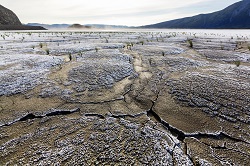How changes in biotic interactions impact dryland ecosystems
Drylands account for 45 % of the Earth land’s surface. Fighting land degradation and desertification has become a priority in these regions, and vegetation attributes are expected to play a crucial role in this endeavour. In order to implement effective counter-measures, however, stakeholders need to understand all the factors at play. As Dr. Fernando Maestre, coordinator of the DRYFUN project on behalf of the Rey Juan Carlos University, explains, biotic interactions constitute an important gap in our current understanding of dryland environment functioning. “Interactions arising among species, such as competition for resources and mutualisms, largely determine key attributes of natural ecosystems such as the number of species, the diversity of their genes and the functional attributes they contain. Despite their acknowledged importance, very few studies have attempted to evaluate how biotic interactions ultimately influence how natural ecosystems function, particularly in drylands.” The problem essentially lay in a lack of suitable data, an issue that was recently solved by the ERC-funded BIOCOM project. From 2006 to 2013, the BIOCOM consortium collected detailed information on the abiotic factors, structure and functioning of 236 dryland ecosystems from all continents except Antarctica, making it the first standardized survey of its kind. A mathematical model of dryland functioning With DRYFUN, Dr. Maestre and his team coupled the BIOCOM results with self- or database-collected data on key functional attributes of plant species such as plant height and leaf characteristics – a task led by Yoann Le Bagousse-Pinguet, postdoctoral researcher leading DRYFUN and Nicolas Gross, a researcher from INRA who has been working at Dr. Maestre´s lab for two years. These data were then analysed with statistical tools that are commonly used in fields such as astrophysics and macro-economy, but that had never been applied to ecology. “We found a mathematical relationship between key trends in the distribution of plant functional attributes (traits) that cannot be explained by chance. This relationship predicted that a strikingly high trait diversity within dryland plant communities was associated with a local maximisation of the provision of multiple functions linked to plant productivity and nutrient cycling (multifunctionality),” Dr Maestre explains. “The mathematical relationship identified in our project is also important because it can be used to quantify how much trait diversity is required to maximise multifunctionality at a local level.” Concretely, the findings of DRYFUN indicate that trait distribution can be used to predict the functional consequences of biodiversity loss in terrestrial ecosystems. As such, they can guide management efforts aimed at maintaining key ecosystem services linked to productivity and soil fertility. The database and statistical methodologies developed under DRYFUN are currently being used within the framework of the ERC-funded project BIODESERT. The project, which runs until December 2020, aims to further scientific understanding of the functioning and resilience of drylands to major desertification drivers.







